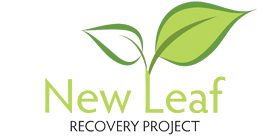What Is it Like to Have Your Stomach Pumped?

If you’ve ingested something toxic, like poisonous chemicals, getting your stomach pumped could save your life – or at the very least reduced the risk of serious complications. This procedure is commonly used after an overdose for this exact reason. A stomach pump can be used no matter what substance has caused the emergency, whether it be due to prescription medication, alcohol poisoning, or something else.

Why you might need to get your stomach pumped
A stomach pump is usually performed when a doctor needs to quickly empty your stomach contents. The procedure is usually only performed to prevent serious medical complications in emergency situations. There are also several medical procedures that may require a stomach pump beforehand to limit risks, including:
- During or after a gastrectomy.
- After a stomach haemorrhage.
- Relieving pressure on blocked intestines.
- Collecting stomach acid samples.
- Decompressing the stomach during assisted ventilation.
What happens when you get your stomach pumped?
If you’re in a situation where you may need your stomach pumped, it’s normal to be curious about what to expect or nervous about the procedure. We’ll break down what to expect in terms of the medical procedure as well as your own experience of the process.
The Medical Procedure
A stomach pump may also be called a gastric suction, gastric lavage, or nasogastric tube suction by a medical professional. A doctor will begin the procedure by numbing the client’s throat to reduce gagging and irritation. A tube will then be inserted through the mouth or nose, which will be threaded down to the stomach. Water or saline is then sprayed down this tube before suction is finally applied to remove the contents of the stomach.
What Is This Experience Like?
As the doctor will administer a numbing agent pain should be minimal, with most only experiencing discomfort from the intrusion. In the case where the oesophagus is sore or irritated from vomiting, then there may be some pain. But the procedure should be quite quick. Plus, your nurse or doctor will be on hand to reassure you and help you to relax as much as possible – making to experience easier. Either way, the slight unpleasantness from having your stomach pumped is worth having dangerous toxins removed from your body.
Prep and Aftercare
For most medical procedures, preparation and aftercare are important stages in the process. However, as most clients get their stomachs pumped as an emergency procedure, there is often little or no pre-warning for this process. This leaves no room for preparation.
At the end of the procedure, the doctor may remove the tube straight away or leave it in for a time, if necessary, depending on the condition of the client. After having your stomach pumped you shouldn’t have solid foods for a few hours. Instead, you should only consume thin liquids.
Also, after this procedure, a client should monitor themselves for potential side effects. These could include coughing up phlegm, wheezing, chest pain, fatigue, or fever, all of which are signs of aspiration pneumonia. Other side effects are also possible, like minor bleeding, vocal cord spasms, or even a hole in the oesophagus.
A client may also experience withdrawal symptoms from the substance that was removed. In this case, it is important to seek help. Get in touch today to take the first step on your road to recovery.
Receive a Free Call Back
"*" indicates required fields
Our Complete Recovery Journey - from your initial enquiry, all the way through treatment and beyond into ongoing support, New Leaf Recovery are there to guide and support you.
New Leaf offers a complete journey of treatment - from initial detoxification and rehabilitation to ongoing support, including aftercare, family support, and beyond into long-term recovery.
Getting the right accommodation enables us to provide the right backdrop for our recovery methods. Any form of rehabilitation needs to happen in a safe, comfortable, secure and friendly environment.
Receive a Free Call Back
"*" indicates required fields










